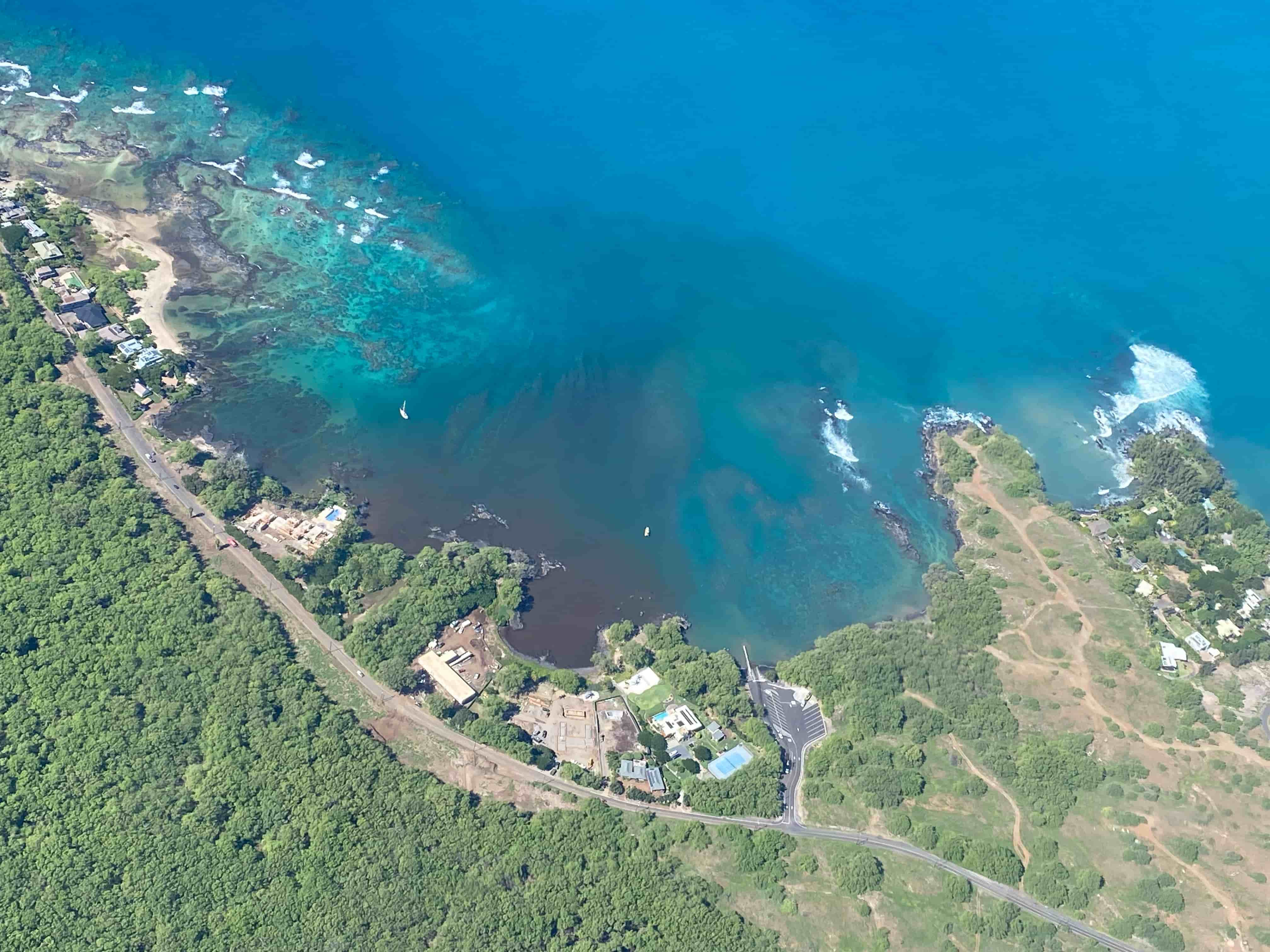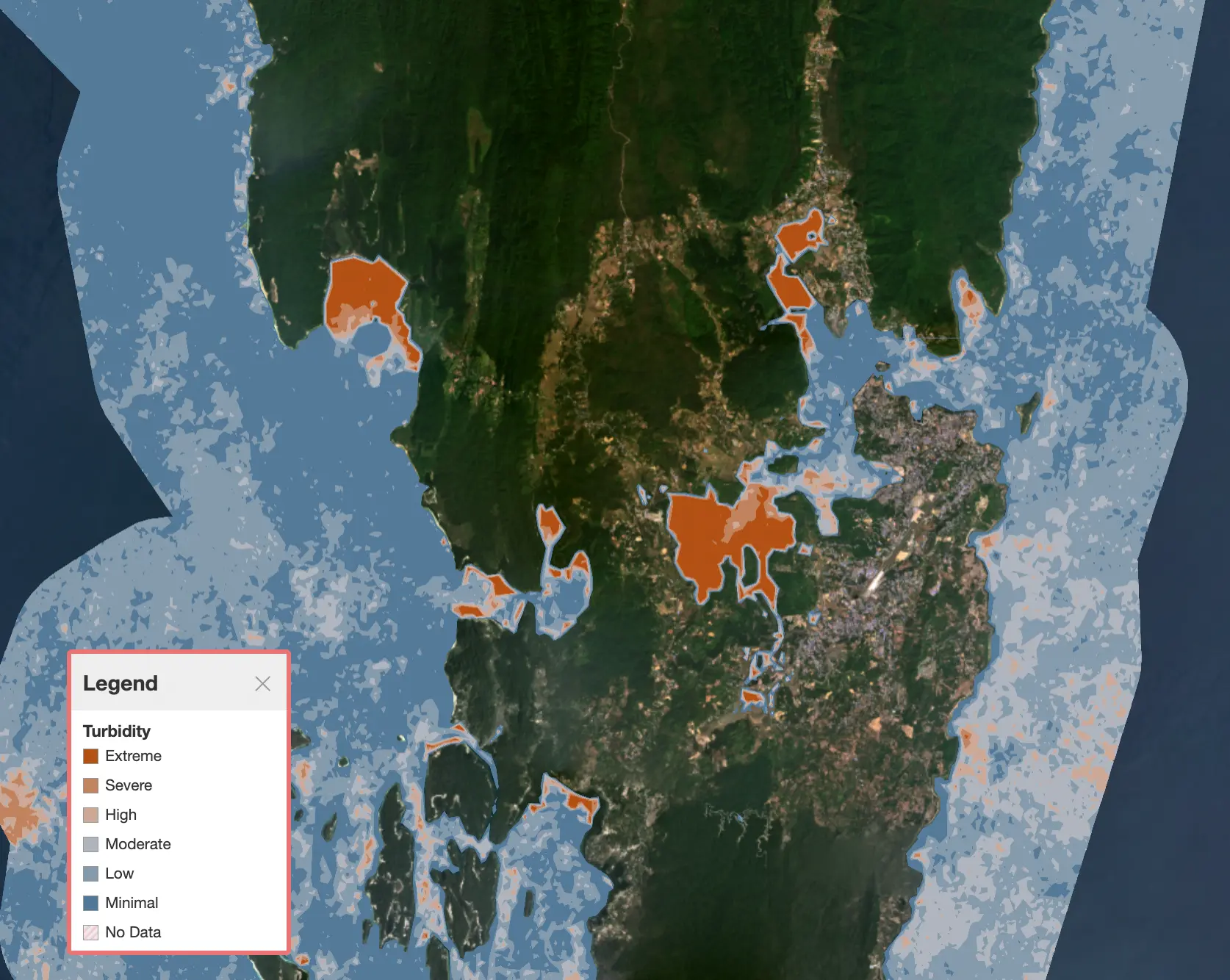Introducing new and improved annual turbidity datasets
March 14, 2024Aloha Allen Coral Atlas Users,
Most people know that coral reefs are threatened by ocean warming, but fewer may realize that water quality is just as important in determining the health of our reefs. When I say water quality, I’m using the term to distinguish the composition of the seawater that keeps our reefs healthy, or not.
Lots of factors impact water quality. Some are naturally occurring, while others may be driven by society. Take for example coastal development: Proper planning and execution can minimize runoff from land to ocean during and after a coastline undergoes infrastructural development. However, all too often, insufficient land-based mitigation generates losses of soil, industrial products, and other materials into neighboring ocean waters. If a coral reef (or really any reef) quietly resides below such a neighboring waterline, the impacts of worsening water quality can be catastrophic.
 A sediment plume in Hawaiʻi
A sediment plume in Hawaiʻi
Changes in water quality can be categorized into two major divisions. One centers on long-term, or chronic, issues like sediment loss from agricultural lands into the ocean. The other may be an episodic or acute impact, such as improper development of a hotel or resort close to the water’s edge. Both chronic and acute effects on water quality may not be obvious to the naked eye. Examples include the insidious effects of agro-chemicals that may “leak out” from land to sea. These chemicals may be low in concentration, and are often invisible to us, but are deadly to corals.
All too often, however, changes in water quality can be observed visually, such as in the unfortunate circumstance when the azure waters of a tropical region are engulfed by muddy sediment from nearby land. This type of measurement of water quality is simply referred to as ‘turbidity’. Ocean turbidity is not always a bad thing; At times turbidity may decrease the amount of light that penetrates the ocean, and that can actually protect some light-sensitive species of corals, especially when water temperatures spike up.
However, turbidity can often indicate places and times when land is overly impacting reefs. In such cases, turbidity may starve corals and other species of light, and it may deliver other chemical or physical impacts on the reef. As a result, monitoring ocean turbidity in the vicinity of coral reefs has become an important, and still growing, challenge for reef conservationists, managers, and scientists.
 Levels of Turbidity in the Andaman and Nicobar Islands
Levels of Turbidity in the Andaman and Nicobar Islands
That’s why we at the Allen Coral Atlas continue to work on improving ocean turbidity monitoring, to support you, our users in your efforts to monitor, assess, and mitigate sources of turbidity over time. Current satellites, it turns out, are not ideal for monitoring turbidity. Previously we released a quarterly estimate of ocean turbidity in and around our mapped coral reefs, but the data are admittedly noisy, so we set out to clean up what we could.
That leads me to our announcement today of our new annual ocean turbidity product, carefully derived from satellite imagery (see technical documentation), and developed and presented for your long-term, annual monitoring of water quality trends over reefs of your interest and concern. We retrospectively analyzed satellite data, back to 2019, and forward in time, so that you can monitor long-term average trends, identifying chronic turbidity. We sincerely hope that this new and improved tool will assist you in your coral reef conservation and management efforts.
Me ke aloha, from Hawaiʻi Island,
Greg
